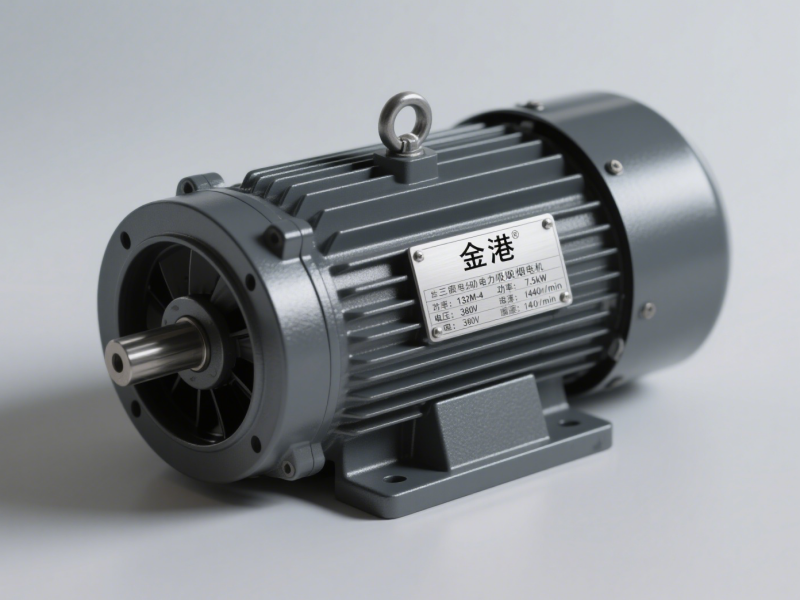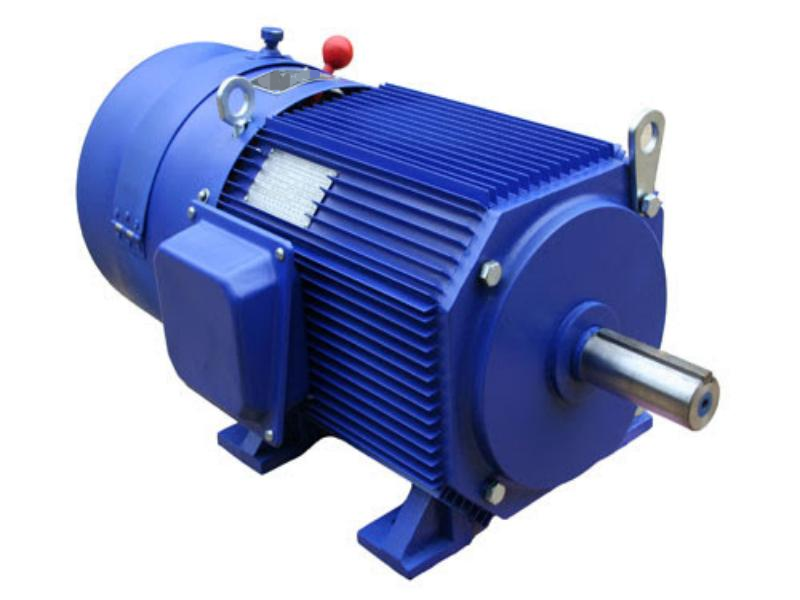Application of three-phase asynchronous motor in smoke exhaust motor
Three-phase asynchronous motors are widely used in smoke exhaust motors due to their simple structure, high reliability, reasonable cost, and stable power performance. As core power components in fire smoke exhaust systems and industrial smoke exhaust equipment, smoke exhaust motors must adapt to harsh operating conditions such as high temperatures, dusty conditions, and instantaneous starts. Three-phase asynchronous motors, through their targeted design, perfectly meet these requirements. The following details their application advantages, special designs, and typical scenarios:
Advantages of Three-Phase Asynchronous Motors in Smoke Exhaust Motors
The core function of a smoke exhaust motor is to exhaust smoke (such as fire smoke and industrial waste gas) by driving a fan (centrifugal or axial fan). These motors must meet requirements such as high temperature tolerance, instantaneous high power output, and long-term reliability. The characteristics of three-phase asynchronous motors are precisely tailored to these requirements:
1.Adapt to high-temperature smoke exhaust environments
During fire smoke exhaust, smoke temperatures can reach 280°C (or even higher). Industrial smoke exhaust can also contain high-temperature gases of 100-200°C. Three-phase asynchronous motors can be optimized for short-term high-temperature shocks through design optimization (such as using high-temperature-resistant materials). For example, improving the insulation grade (using Class F or Class H insulation materials, with a temperature resistance of 155°C or above, respectively) ensures that the motor will not fail in high temperatures. Furthermore, using high-temperature-resistant grease for the motor windings and bearings prevents lubrication failure at high temperatures.
2.Power Performance Matching Smoke Exhaust Requirements
Smoke exhaust requires sufficient air pressure (to overcome duct resistance) and air volume (to quickly exhaust smoke). Three-phase asynchronous motors offer a wide range of output power (from several kilowatts to hundreds of kilowatts). By adjusting the number of poles (e.g., 4-pole, 6-pole), the speed can be controlled (1500 rpm, 1000 rpm, etc.) to match the pressure-air volume curve of different fans. For example, if high air volume is required for smoke exhaust in an underground garage, a motor with a low pole number (high speed) can be selected. High-rise buildings, where vertical smoke exhaust ducts have high resistance, require a high-torque motor (achieved by increasing the rotor diameter or optimizing the winding design).
3.Reliability Meets Emergency Requirements
Fire smoke exhaust systems require “fail-free emergency start-up” (they must start within 30 seconds in the event of a fire), while industrial smoke exhaust systems require “continuous and stable operation.” Three-phase asynchronous motors lack readily consumable components such as commutators and brushes, resulting in a simple structure and low failure probability. Their low rotor inertia ensures fast starting response, meeting instantaneous start requirements.
4.Cost and Maintenance Advantages
Compared to DC or synchronous motors, three-phase asynchronous motors have lower manufacturing costs (due to high material utilization and simpler manufacturing processes). Maintenance requires only regular inspections, bearing lubrication, and dust removal, without the need for complex commissioning. They are suitable for large-scale smoke exhaust systems in construction, industry, and other settings.

Special Design of Three-Phase Asynchronous Motors for Smoke Exhaust Motors
To meet the stringent requirements of smoke exhaust applications, three-phase asynchronous motors undergo targeted optimization:
1.High-Temperature-Resistant Structure
Insulation System: High-temperature-resistant insulation materials such as mica tape and polyimide are used, achieving insulation ratings up to Class F (maximum allowable temperature 155°C) or Class H (180°C). Some special models can even reach Class C (above 200°C), ensuring resistance to high smoke temperatures.
Heat Dissipation Design: If exhaust temperatures are excessively high, forced air cooling (external cooling fans) or heat pipes can be used to prevent overheating of the motor. Some models also feature heat dissipation slots in the housing to enhance air circulation.
Bearings and Lubrication: High-temperature-resistant bearings are selected, along with high-temperature grease (resistant to temperatures exceeding 200°C) to prevent bearing seizure.
2.Improved Protection Level
For exhaust environments with smoke, dust, and moisture (such as exhaust in humid areas), the motor’s protection level must be increased:
The enclosure should be IP54 (dustproof and splashproof) or IP65 (completely dustproof and resistant to low-pressure water jets). Sealing rubber rings and a labyrinthine structure prevent dust and liquids from entering.
The winding ends should be coated with oil- and chemical-resistant paint to protect against corrosive gases (such as acidic and alkaline waste gases) in industrial exhaust.
3.Fire Interlock Control Compatibility
Fire smoke exhaust motors must be linked to the fire alarm system. Three-phase asynchronous motors can achieve this through control circuitry:
Emergency Start Function: Equipped with dual power supplies (main power + backup generator), this function ensures rapid power switching in the event of a power outage, allowing the motor to start instantly (start-up time <30 seconds).
Overload Protection: A built-in thermal relay or temperature sensor automatically shuts off power when the motor is overloaded or overheats, preventing burnout. (However, in fire scenarios, the “overload protection” setting is typically set to “no trip” to prioritize smoke exhaust.)
Typical Application Scenarios
Three-phase asynchronous motor-driven smoke exhaust motors are widely used in locations requiring forced smoke exhaust. Typical applications include:
1.Building fire smoke exhaust: Smoke exhaust is achieved in stairwells, antechambers, underground garages, and shopping malls in high-rise buildings using centrifugal fans. Motor power typically ranges from 5.5-75kW and must meet the GB 14888 “Fire Smoke Exhaust Fan” standard (e.g., continuous operation at 280°C for 30 minutes).
2.Industrial workshop smoke exhaust: Metallurgical, chemical, and welding workshops, among others, exhaust high-temperature, dusty, or corrosive fumes. Motors must be designed to withstand high temperatures and corrosion, with power ratings exceeding 100kW.
3.Tunnel smoke exhaust: Axial flow fans are used in highway or railway tunnels for longitudinal or transverse smoke exhaust. Motors must withstand the high humidity and vibration conditions found in tunnels and be capable of long-term operation.
Summary
Three-phase asynchronous motors, with their targeted design offering high-temperature resistance, high protection, and high power, have become the core power source of choice for smoke exhaust motors. Their comprehensive advantages in reliability, cost, and adaptability enable them to meet both the emergency requirements of fire smoke exhaust and the long-term stable operation demands of industrial smoke exhaust, making them an indispensable key component in smoke exhaust systems.




